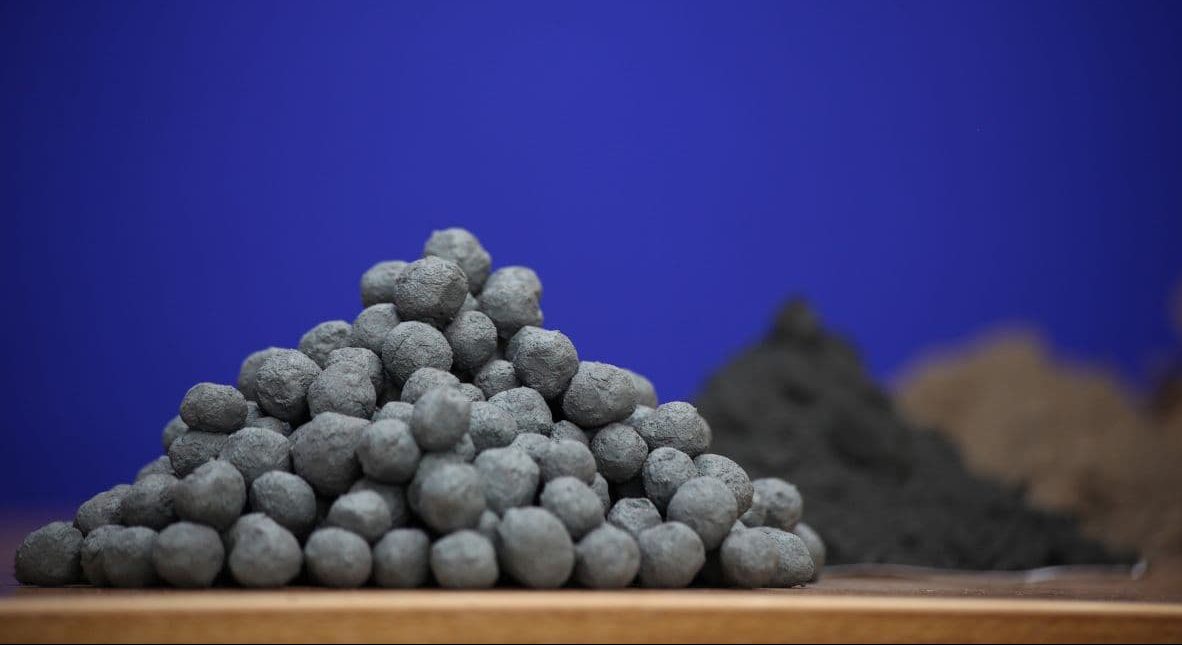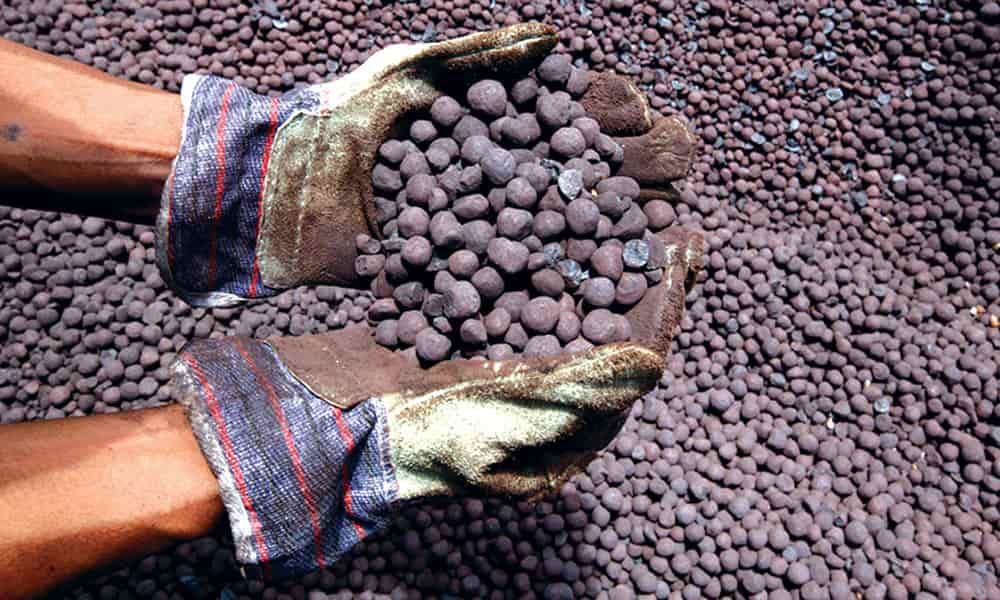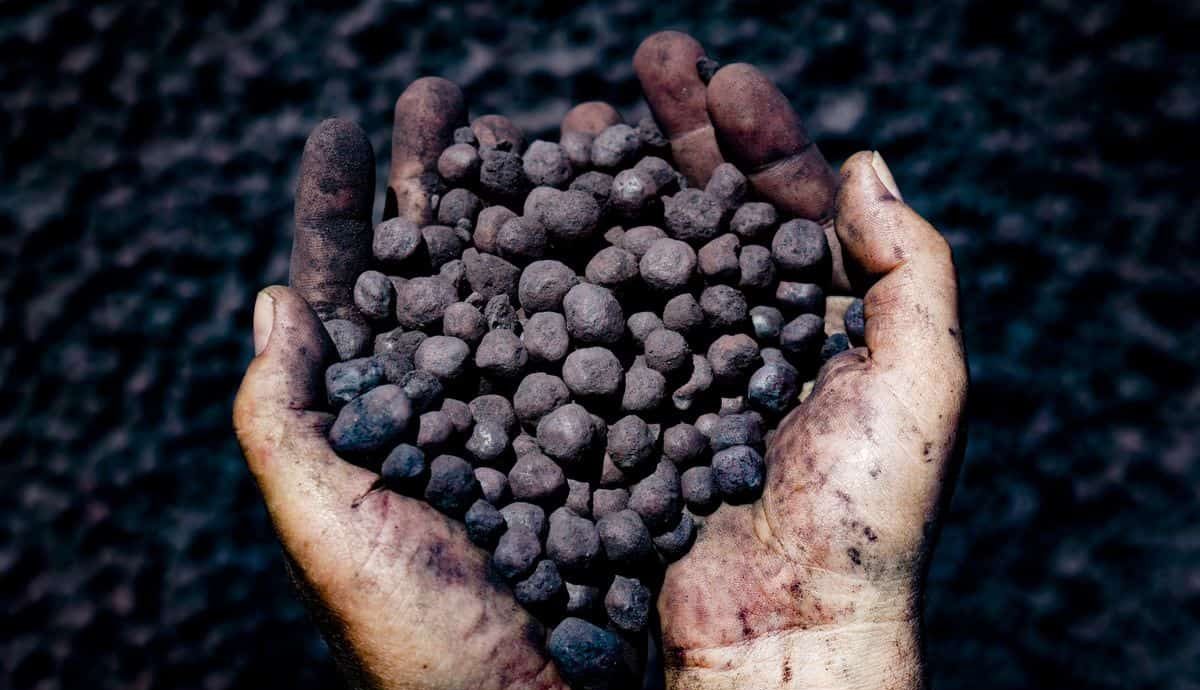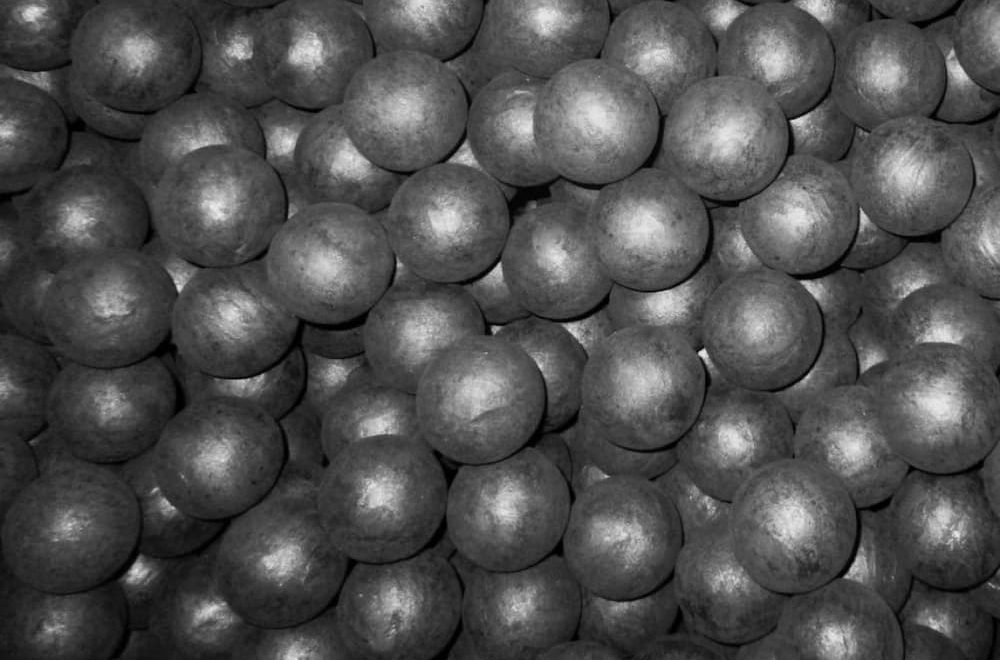What are particles? Iron ore pellets, like concentrates, are raw materials for the manufacture of iron, which is pulverized and ground into pellets ranging from 0 to 100 microns for supply to industry as pellet feed.
Green pellets and hardened green pellets are used in the direct reduction process to produce iron.
Raw materials for the production and production of bell jars Industrial batch feed consists of iron ore with a grain size of less than 10 mm (6 mm) and is used in blast furnaces and direct reduction plants.
These materials are introduced into the pelleting device in the blast furnace and can also be introduced into the pellet template after pulverization in the direct regeneration process.

Bulk feeds lend themselves better to pelleting than pelleting in a number of ways, which we’ll discuss below.
Bulk feed is easier to transport than pelleted feed.
The relative losses of bulk feed during transport are small.
Block feeds do not require special handling equipment.
Making Pellets or Pellets from Ironstone The main raw material for making pellets is iron ore, which is used as a concentrate.
Concentrate is the product of refining iron and removing impurities from iron ore by cracking and softening.
When granulating, the crushing of the concentrate is usually insufficient and needs to be re-macerated, and the particle size must be less than 45 microns (325 mesh).
Since the moisture generated during the production process is around 10%, the concentrate must be dried, and dry iron ore powder is added to this so that the raw material has the desired properties and qualities when it is used.

Blast furnace or direct regeneration.
Additives for Making Grains Additives added to the base material for making iron balls include the following.
For example, the added material acts as a binder and physical bond, altering and affecting the physical and mechanical properties of the raw and cooked particles.
Materials that increase the porosity of the pellets and lead to improved metallurgical properties and regeneration of the pellets.
A slag-forming material such as lime reacts with the iron ore material in the self-cast pellets and creates a slag.
It is a special material that makes iron ore particles strong by forming chemical bonds between them.
In general, additives cause the following changes in green particles.
Increase the strength of raw material pellets You can easily convert chemical bonds to vitrified bonds.
They facilitate the granulation process.
They solve the problems caused by the drying of the granules.

Below we describe the additives used in the production of iron pellets.
What is bentonite? Bentonite is made from various clay minerals with high plasticity (including montmorillonite, allolin, etc.) and is the best binder for pellet particles.
In bentonite minerals, an octahedral layer of aluminum oxide is sandwiched between two tetrahedral layers of silica, with the bond between the two layers of silica in which the silicon is tetravalent being formed by a layer of trivalent aluminum in which one valence is less than two valences.
It has two floors.
This small capacity causes the middle layer to absorb cations such as sodium, potassium and calcium, and when water is added to the mineral, water molecules surround the cations and increase the distance between the two layers of silica to a level that increases their volume. Post-processing At a temperature of 1200-1400 degrees Celsius during the burning of the pellets, the process and time of the reaction of bentonite with iron oxide to form slag takes place (the bentonite content in the pellet is about 0.5-1%).
When these compounds are melted at high temperatures, they form a thin film around the bentonite particles and form a vitrified bond that increases the mechanical strength of the particles.
What role do organic substances play in particle production? The role of organic materials in the production of iron pellets is to form chemical bonds between particles.
These materials are not as strong as bentonite at adhering and evenly distributing moisture, but instead decompose during cooking, leaving the pellet as a gas without leaving anything in the pellet.
The organic substance released in gaseous form by the particles increases the porosity of the particles and influences the regeneration quality of the particles.
Organics, starches, molasses, etc. It has no effect on compounds containing it.

Milk of lime or application of calcium hydroxide Milk of lime, also known as calcium hydroxide, consists of burnt limestone and a mixture of artificial lime and water.
This substance can hold iron particles together and has cohesive properties.
This material is better for bonding self-adhesive particles and is not recommended for acidic particles.
If there is enough lime in the granules (about 5%) it will become stronger, but too much will backfire and reduce the mechanical resistance of the granules due to the formation of a glassy phase.
Lime is commonly found in granules and increases the kinematic index of the granules.
Lime, which normally has a size of around 0.1 to 3 mm, causes a loss of grain strength. For this purpose, it is used in a burnt form of less than 0.5 mm.
Lime, like slaked lime, will cause the particle to lack mechanical strength if the particle contains more than 5%, so the dosage of these materials must be observed.
solution
Our vision is to be a standard of customized products and quality services, so that with competitive prices and favorable shipping services, we can build a good brand image of our company in domestic and international markets.
We are passionate about what we do and we strive to meet our customers’ needs by providing quality products and services.
And don’t hesitate to ask any questions, our support team is at your disposal.
Visit our website for more information.



